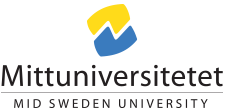The Internet of Things
The Internet of things (IoT) is a computing concept that describes a future where everyday physical objects will be connected to the Internet and will be able to identify themselves to other devices.
The term Internet of Things is closely identified with RFID as the method of communication, although it could also include other sensor technologies, other wireless technologies, QR codes, etc. IoT is important because an object that can represent itself digitally becomes something greater than the object in itself. The object does no longer have to relate just to you; now it is connected to objects around it, data from a database, etc. When many objects act in unison, they are referred to as having “ambient intelligence”
More about the project and goals
Student teams participating in the project will use or build everyday objects which are made smarter through sensor and communications technologies, to stimulate people to contribute data and to create solutions which solve communal problems.
The goal is to develop and implement concepts to use IoT. To reach this goal the team should consist of different competences. Some students should focus on developing concepts and evaluation of the system with respect to economic issues and usability. Another group of students will focus more on the implementation of the system which includes hardware and embedded software development. During the project, these two groups are interacting closely. In the end of the project a prototype of the system should be demonstrated.
This project targets a number of different study areas. While each study area contributes with an individual expertise to the project outcome, interaction between the study areas is required in order to achieve a successful project result. Students with at least one of the following backgrounds are welcome in the project:
- Human Centered design
- Technical Computing
- System and Network Engineering
- Electronics
- Electronics design
- Embedded software design
Program
- Watching online lecture on The Internet of Things by prof. Krose
- Introduction on Scrum (methodology that will be used)
- Dividing 5 short papers on IoT among the group
- Students present the paper they read to the rest of the group
- Based on the above, group discussion on what to design
- Design phase
- Build
- Testing
- Final product: a prototype of an internet enabled object (could be a paper prototype)
Electrical Engineering/Computer Engineering/Computer Science
The students contribute to the project with a domain perspective. Possible questions to be addressed include:
- How to retrieve or to extract data from the sensors which are the most important things of internet of things?
- How to present and analyze the data which is extracted from the internet of things such as data from the sensors?
- How to apply and to show the result of data which is analyzed through an app?
System and Network Engineering
The students contribute to the project with a domain perspective. Possible questions to be addressed include:
- Which protocols are needed to enable smart objects to communicate together? How secure is the communication between the smart objects?
- How can you minimize the vulnerability of the data and how you can prevent being attacked or harmed by an application-attacker?
Human Centered Design
The students contribute to the project with a domain perspective. Possible questions to be addressed include:
- How to design an app which shows/presents the result based on an input from the user?
- How to design an app which will be built through the rules of user interaction?
If you have any questions about the project, please contact
Reza Esmaili, Amsterdam University of Applied Sciences, Email:
Stefan Haller, Mid Sweden University, Email: Stefan.haller@miun.se
Read more about the lecturers
